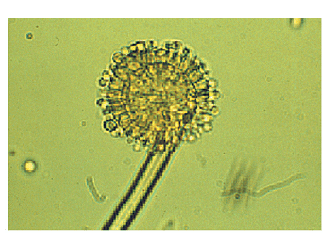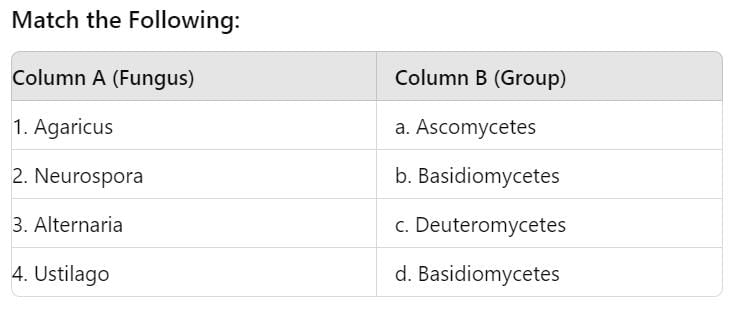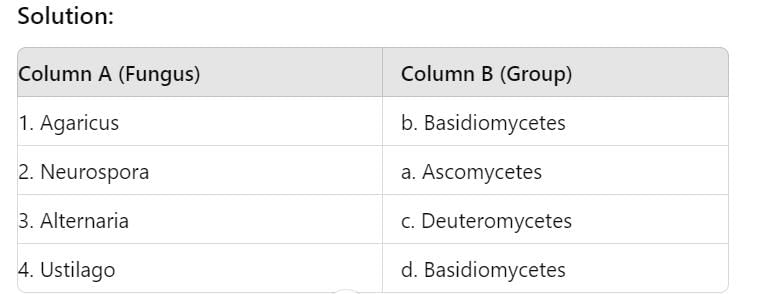NEET Exam > NEET Tests > Biology Class 11 > 15 Minute Test: Kingdom Fungi - NEET MCQ
15 Minute Test: Kingdom Fungi - NEET MCQ
Test Description
15 Questions MCQ Test Biology Class 11 - 15 Minute Test: Kingdom Fungi
15 Minute Test: Kingdom Fungi for NEET 2025 is part of Biology Class 11 preparation. The 15 Minute Test: Kingdom Fungi questions and answers have been
prepared according to the NEET exam syllabus.The 15 Minute Test: Kingdom Fungi MCQs are made for NEET 2025 Exam. Find important
definitions, questions, notes, meanings, examples, exercises, MCQs and online tests for 15 Minute Test: Kingdom Fungi below.
Solutions of 15 Minute Test: Kingdom Fungi questions in English are available as part of our Biology Class 11 for NEET & 15 Minute Test: Kingdom Fungi solutions in
Hindi for Biology Class 11 course. Download more important topics, notes, lectures and mock
test series for NEET Exam by signing up for free. Attempt 15 Minute Test: Kingdom Fungi | 15 questions in 15 minutes | Mock test for NEET preparation | Free important questions MCQ to study Biology Class 11 for NEET Exam | Download free PDF with solutions
15 Minute Test: Kingdom Fungi - Question 1
Identify the incorrect statement about the diagram of the fungi given below -


Detailed Solution for 15 Minute Test: Kingdom Fungi - Question 1
15 Minute Test: Kingdom Fungi - Question 2
Assertion(A): Deuteromycetes are called imperfect fungi.
Reason(R): These fungi have autotrophic mode of nutrition .
Reason(R): These fungi have autotrophic mode of nutrition .
Detailed Solution for 15 Minute Test: Kingdom Fungi - Question 2
Detailed Solution for 15 Minute Test: Kingdom Fungi - Question 3
Detailed Solution for 15 Minute Test: Kingdom Fungi - Question 4
15 Minute Test: Kingdom Fungi - Question 5
Which among the following are incorrect about Phycomycetes?
Detailed Solution for 15 Minute Test: Kingdom Fungi - Question 5
15 Minute Test: Kingdom Fungi - Question 6
Non-motile spores in Phycomycetes are called as _____
Detailed Solution for 15 Minute Test: Kingdom Fungi - Question 6
15 Minute Test: Kingdom Fungi - Question 7
Identify the group of fungi that is not correctly matched with all the characters given below:
Detailed Solution for 15 Minute Test: Kingdom Fungi - Question 7
Detailed Solution for 15 Minute Test: Kingdom Fungi - Question 8
Detailed Solution for 15 Minute Test: Kingdom Fungi - Question 9
Detailed Solution for 15 Minute Test: Kingdom Fungi - Question 10
15 Minute Test: Kingdom Fungi - Question 11
Which of the following is not true regarding the reproduction and life cycle of basidiomycetes?
Detailed Solution for 15 Minute Test: Kingdom Fungi - Question 11
Detailed Solution for 15 Minute Test: Kingdom Fungi - Question 12
15 Minute Test: Kingdom Fungi - Question 13
What are the three main steps involved in the sexual cycle in sequence?
Detailed Solution for 15 Minute Test: Kingdom Fungi - Question 13
15 Minute Test: Kingdom Fungi - Question 14
What is the term for the long, slender thread-like structures that make up the body of fungi?
Detailed Solution for 15 Minute Test: Kingdom Fungi - Question 14
Detailed Solution for 15 Minute Test: Kingdom Fungi - Question 15
|
169 videos|524 docs|136 tests
|
Information about 15 Minute Test: Kingdom Fungi Page
In this test you can find the Exam questions for 15 Minute Test: Kingdom Fungi solved & explained in the simplest way possible.
Besides giving Questions and answers for 15 Minute Test: Kingdom Fungi, EduRev gives you an ample number of Online tests for practice





















